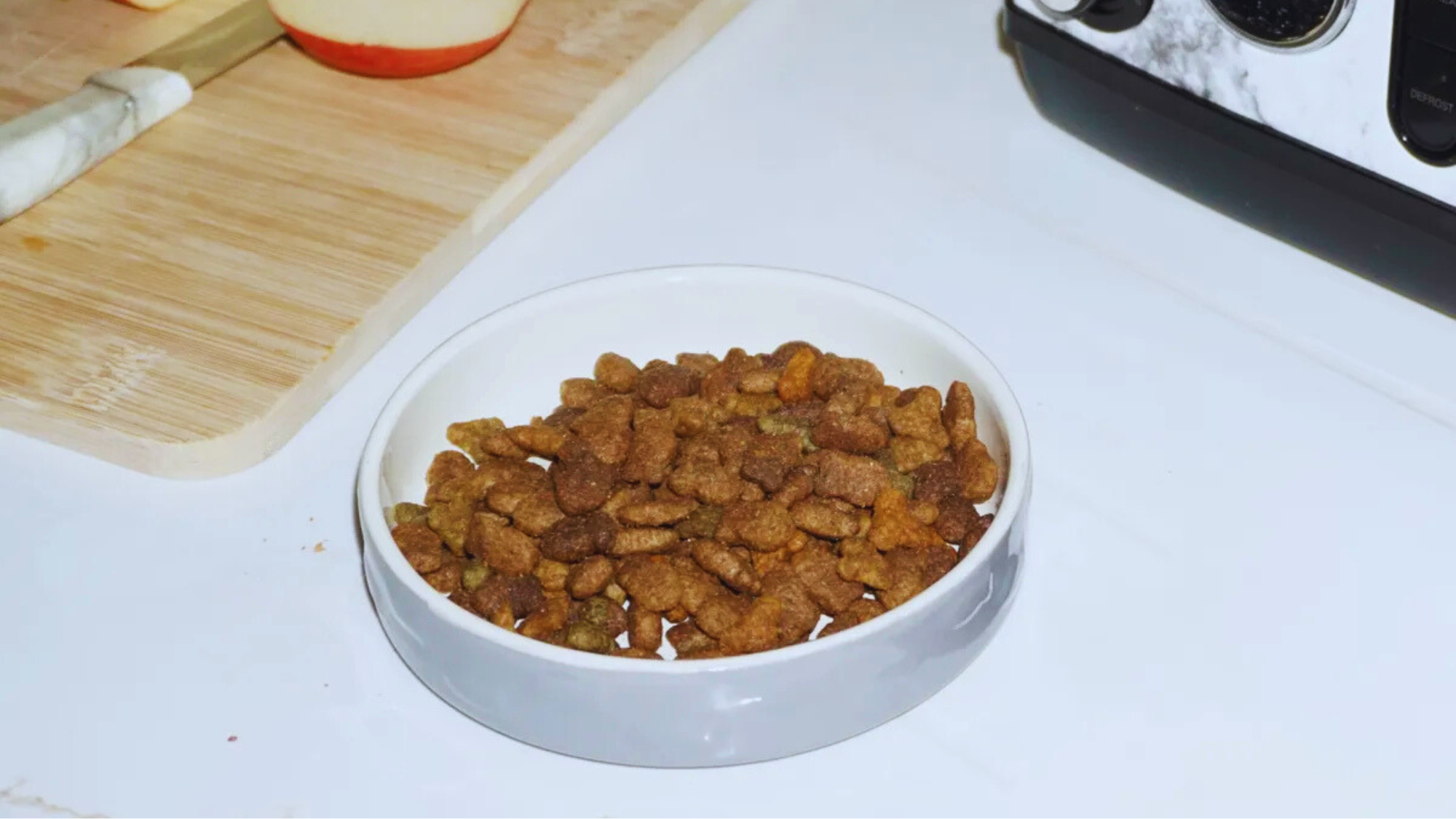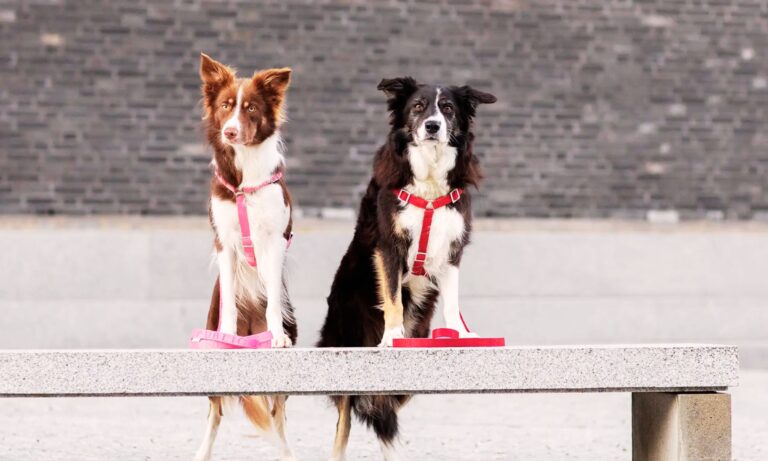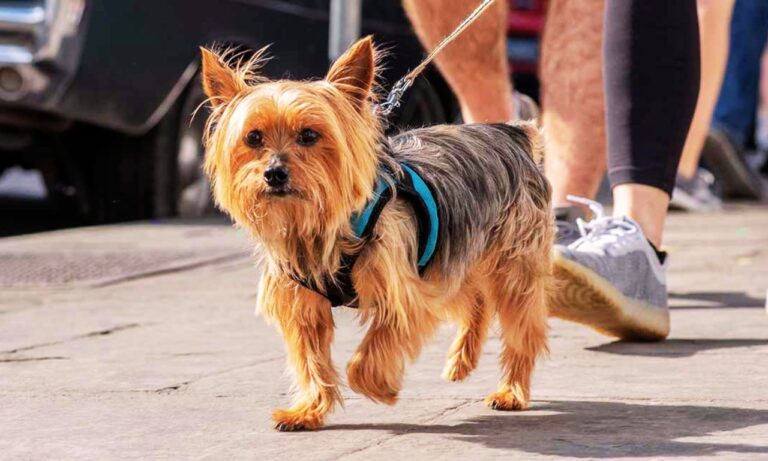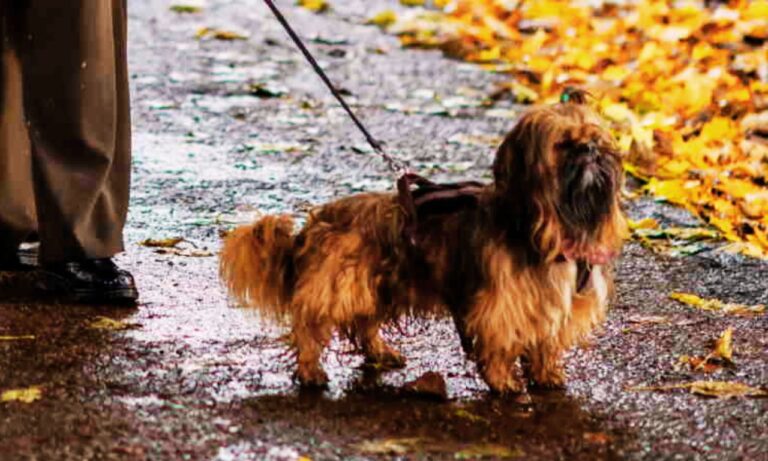| Summary: Feeding cats kibble only is okay if it’s high-quality and nutritionally complete. However, dry food lacks moisture, which can lead to dehydration and urinary issues. Ensure fresh water is always available, or supplement with wet food for hydration. Choosing a premium, protein-rich kibble helps maintain optimal feline health. |
Cat owners often debate whether feeding their feline companions only kibble is the right choice. Dry cat food, or kibble, is widely available, cost-effective, and recommended by many veterinarians. So, Is it okay to feed cats kibble only?
But Is It Okay to Feed Cats Kibble Only? Is it truly enough to meet all of a cat’s nutritional needs? While kibble can provide balanced nutrition, there are concerns regarding hydration, ingredient quality, and long-term health effects.
I will delve into whether an all-kibble diet is safe for cats, exploring its benefits, drawbacks, and ways to optimize your cat’s health when feeding only dry food. For insights on whether Pomeranians should wear a collar, including considerations for safety and alternatives, check out this informative article.
Blog Highlights
ToggleQuick Fix FAQ Guide
1. Is It Okay to Feed Cats Kibble Only | Nutritional Profile of Kibble: Does It Cover All Needs?
A cat’s diet should include at least 26% protein (as per AAFCO guidelines) and essential nutrients like taurine, omega fatty acids, and vitamins. Most high-quality kibble brands exceed this minimum requirement, with some offering 30-45% protein content, ensuring that cats get the amino acids they need for muscle maintenance, organ function, and energy.
However, some lower-quality kibble brands contain less than 20% animal protein, with excessive carbohydrates making up 40-50% of the content. Since cats are obligate carnivores, their bodies are not designed to process large amounts of carbs, which can lead to obesity and diabetes.

To ensure a kibble-only diet meets all nutritional needs, pet owners must select brands that list real meat (chicken, fish, or turkey) as the first ingredient and avoid excessive fillers like corn, wheat, and soy.
2. Hydration Issues: Is Kibble Drying Out Your Cat?
One of the biggest concerns with an all-kibble diet is low moisture content. Dry food typically contains 8-10% moisture, while a cat’s natural diet (such as raw meat or wet food) contains 60-80% water.
Cats have a low thirst drive, meaning they do not instinctively drink large amounts of water, relying on food to supply hydration. Check out this comprehensive guide on choosing the best harness for a Pomeranian, including comfort and safety tips: Best Harness for a Pomeranian
Dehydration can lead to urinary tract infections (UTIs), kidney disease, and bladder stones, especially in older cats. According to studies, cats on a kibble-only diet are 50% more likely to develop urinary tract issues compared to those on a wet food or mixed diet. To counter this, pet owners should:
- Provide a constant supply of fresh water (at least 200-250ml per day)
- Invest in a cat water fountain, as flowing water encourages drinking
- Consider adding water or broth (around 1-2 tbsp per meal) to dry kibble
3. Dental Health: Does Kibble Clean a Cat’s Teeth?
Many veterinarians recommend dry food for its abrasive texture, which can help reduce plaque and tartar buildup. Studies show that feeding kibble can reduce tartar accumulation by 10-20% compared to soft food. Some specially formulated dental kibble brands include enzymes like sodium hexametaphosphate, which further help control tartar.
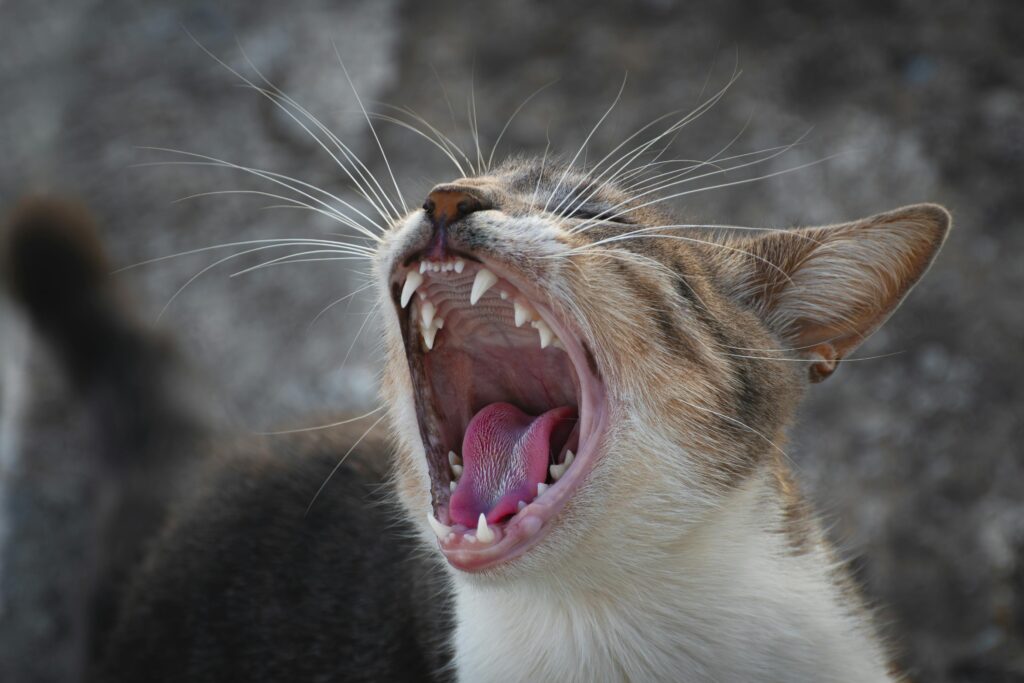
However, kibble alone is not enough to maintain oral health. Cats still need:
- Regular tooth brushing (2-3 times per week) with cat-safe toothpaste
- Dental treats or chews that support gum health
- Routine vet dental checkups (once every 6-12 months)
Relying only on kibble for dental care can result in gingivitis, bad breath, and eventual tooth loss if no additional measures are taken. Discover if the American Eskimo is a guard dog and learn about its suitability for protecting your home.
4. Is Kibble-Only Diet Linked to Obesity?
Dry food is calorie-dense, with most kibble containing 350-450 calories per 100g. In contrast, wet food has around 80-100 calories per 100g, meaning it takes a smaller portion of kibble to reach a cat’s daily caloric needs.
Indoor cats, who often have lower activity levels (burning around 200 calories per day), are at risk of overeating if free-fed kibble. Obesity affects nearly 60% of cats, leading to diabetes, arthritis, and heart disease. To prevent this, pet owners should:
- Measure portions: An average adult cat needs 150-250 calories per day, so serving sizes should be adjusted accordingly.
- Use food puzzles: Slows down eating and encourages physical activity.
- Avoid free-feeding: Instead, provide two to three meals per day with controlled portions.
5. Cost-Effectiveness: Is Kibble a Budget-Friendly Choice?
One of the biggest advantages of feeding kibble is its affordability. A 4kg bag of premium dry cat food costs around $25-$40 and can last a single cat up to 2 months, whereas high-quality wet food costs around $1.50-$3 per can, totaling $60-$90 per month for daily feeding.
For multi-cat households, feeding wet food exclusively may not be financially feasible. Dry food provides high-calorie content at a lower price, making it the preferred choice for budget-conscious owners. However, while kibble is more economical, it is crucial to invest in higher-quality brands that contain at least 35% animal protein and minimal artificial additives.
6. Does Kibble Affect a Cat’s Lifespan?
Several studies suggest that a high-quality diet, regardless of format (dry or wet), plays a significant role in feline longevity. Cats that receive complete, well-balanced nutrition have an average lifespan of 15-20 years, while those with poor diets may face health complications that shorten their lives. Learn about the size collar for an American Eskimo to ensure a perfect fit and comfort for your dog.
However, cats fed exclusively dry food without proper hydration and portion control may be at increased risk of:
- Kidney disease: Affects nearly 30% of senior cats due to chronic dehydration.
- Diabetes: More common in kibble-fed cats due to excess carbohydrates.
- Obesity: Reduces life expectancy by 2-3 years on average.
To increase longevity, cat owners should:
- Choose high-protein, low-carb dry food
- Ensure their cat drinks at least 200ml of water daily
- Maintain a healthy weight through portion control
7. Mixing Kibble with Wet Food: The Best of Both Worlds?

Since kibble has benefits like affordability and convenience, but wet food offers hydration and better protein content, many veterinarians recommend a mixed diet. Combining both allows cats to:
- Stay hydrated while enjoying the dental benefits of dry food
- Experience variety in texture and taste
- Get a balanced nutritional intake
A good approach is feeding 70% kibble and 30% wet food, ensuring that at least one meal per day includes wet food to support hydration. This approach provides an optimal balance of cost, nutrition, and health benefits.
How to Optimize a Kibble-Only Diet for Your Cat’s Health
If you decide to feed your cat only kibble, it’s crucial to take additional steps to ensure your feline friend stays healthy and thrives on a dry food diet. Is It Okay to Feed Cats Kibble Only? While kibble offers convenience, long shelf life, and affordability, optimizing hydration, portion control, and ingredient quality will make a significant difference in your cat’s overall well-being. Discover why Afghan Hound collars are wide by exploring the unique characteristics of this breed and how wide collars enhance their comfort and style.

A. Choosing the Right Kibble: What to Look For
Not all kibble brands are created equal. Some contain excessive carbohydrates, artificial additives, and low-quality protein sources that can negatively impact your cat’s health over time. When selecting dry food, keep these guidelines in mind:
✅ Protein Content: Look for a kibble that contains at least 35% animal protein (e.g., chicken, fish, turkey, or lamb). Avoid brands that rely on plant-based proteins like pea or soy protein, as cats digest animal protein more efficiently.
✅ Carbohydrate Levels: Ideally, carbs should make up less than 25% of the formula. Many commercial dry foods contain 40-50% carbohydrates, which can contribute to obesity and diabetes.
✅ Essential Nutrients: Ensure the kibble contains taurine, omega-3 and omega-6 fatty acids, and vitamins like A, D, and E, all of which support heart, eye, and skin health.
✅ No Artificial Additives: Avoid dry food with artificial colors, preservatives, or flavor enhancers. Ingredients like BHA, BHT, and ethoxyquin have been linked to potential health risks in pets.
High-quality brands such as Orijen, Blue Buffalo, Wellness Core, and Hill’s Science Diet offer high-protein, grain-free kibble options that align better with a cat’s natural dietary needs.
B. Boosting Hydration: Simple Ways to Encourage Water Intake
Since kibble contains only 8-10% moisture, supplementing hydration is crucial to prevent urinary and kidney issues. Here are some effective ways to encourage your cat to drink more water:
💧 Invest in a Cat Water Fountain: Cats are instinctively attracted to moving water. A pet fountain keeps water fresh, cool, and appealing, increasing the likelihood of your cat drinking throughout the day.
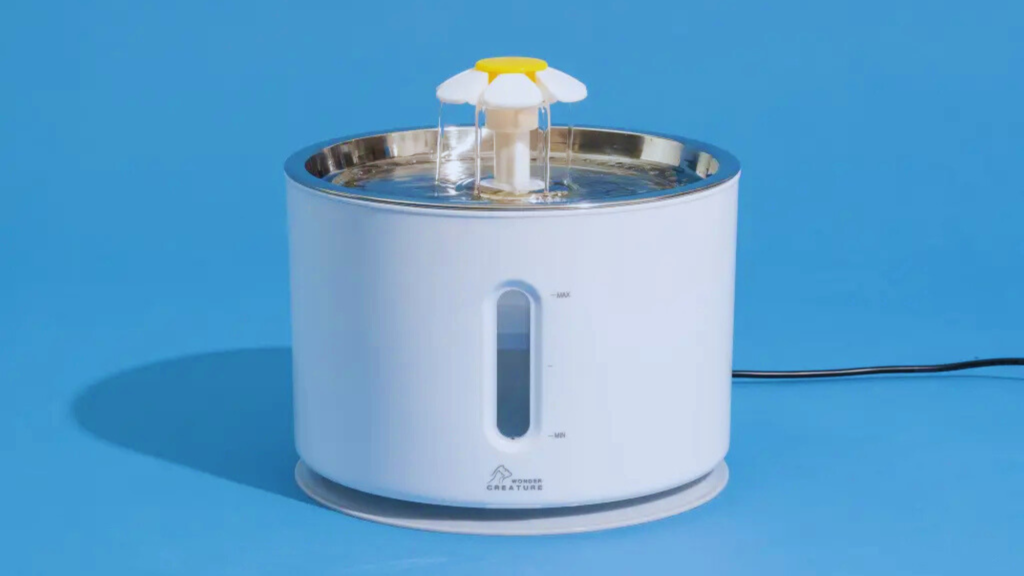
💧 Use Multiple Water Bowls: Place at least 2-3 water bowls around your home in different locations. Some cats prefer drinking in quieter, less-trafficked areas.
💧 Flavor the Water: Adding a few drops of tuna juice, chicken broth (unsalted), or bone broth to the water can make it more enticing for cats.
💧 Mix Water with Kibble: A simple trick is adding 1-2 tablespoons of water per meal to slightly moisten the kibble without making it unappetizing.
Proper hydration is essential for reducing the risk of kidney disease, which affects 30% of cats over the age of 10.
C. Meal Timing and Portion Control: Preventing Overeating
Free-feeding (leaving out kibble all day) can lead to obesity, especially for indoor cats who burn fewer calories. Instead, establish a structured feeding schedule with portion control:
- Kittens (under 6 months): 3-4 meals per day
- Adult cats (1-7 years): 2 meals per day
- Senior cats (7+ years): 2 smaller meals with added hydration support
Use a measuring cup to ensure you’re not overfeeding. The average adult cat requires 150-250 calories per day, depending on activity level and weight. Overfeeding can contribute to obesity, which reduces lifespan by 2-3 years on average.
By choosing a high-protein kibble, ensuring adequate hydration, and monitoring portion sizes, you can optimize a kibble-only diet while keeping your cat healthy and happy.
Conclusion: Is an All-Kibble Diet Okay?
You may wonder, Is It Okay to Feed Cats Kibble Only? While kibble is convenient, ensuring proper hydration and nutrition is crucial. If opting for an all-kibble diet, choose a high-quality formula for your cat’s health. Feeding cats only kibble can be okay if pet owners take proper precautions regarding hydration, portion control, and ingredient quality. High-quality kibble meets nutritional requirements, but hydration remains a significant concern. Choosing the Right Collar for Hounds – Find out how to ensure comfort and safety for your furry friend. Hope this helps answer your question: Is it okay to feed cats kibble only?
To ensure an all-kibble diet is safe and beneficial, pet owners should:
✔ Choose kibble with at least 35% protein and less than 25% carbohydrates
✔ Provide plenty of fresh water daily (200ml minimum)
✔ Avoid free-feeding and measure portions to prevent obesity
✔ Supplement with dental care routines to maintain oral health
For many cat owners, a mixed diet of wet and dry food may be the best approach, combining the affordability and convenience of kibble with the hydration benefits of wet food. Ultimately, the best diet depends on your cat’s health, lifestyle, and individual preferences, so consulting a veterinarian is always recommended.

